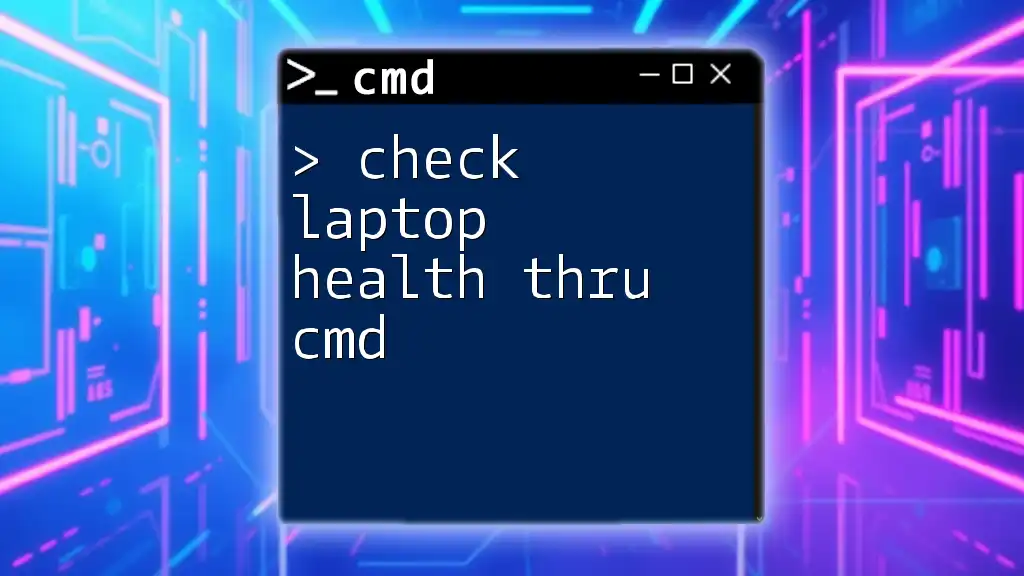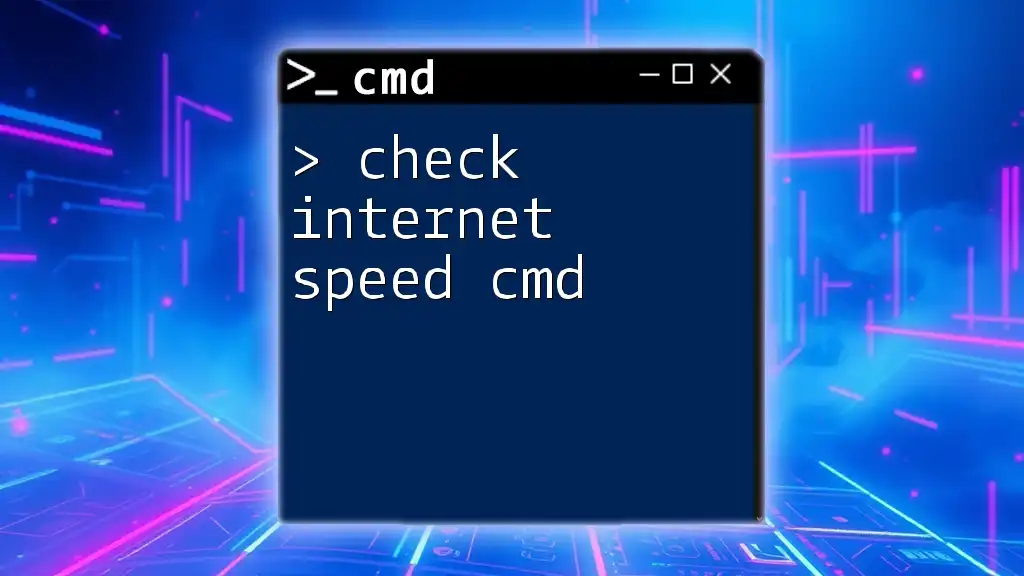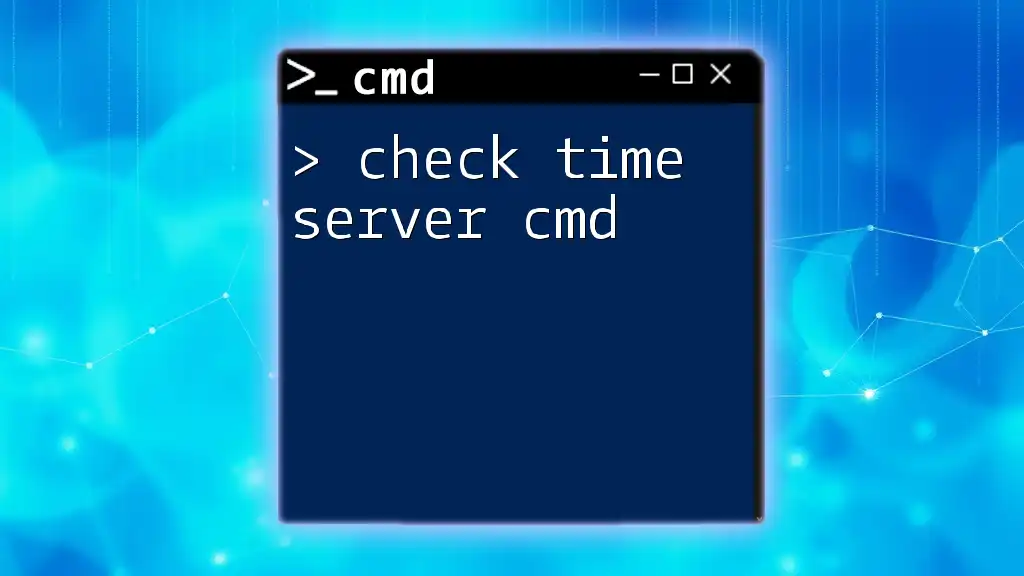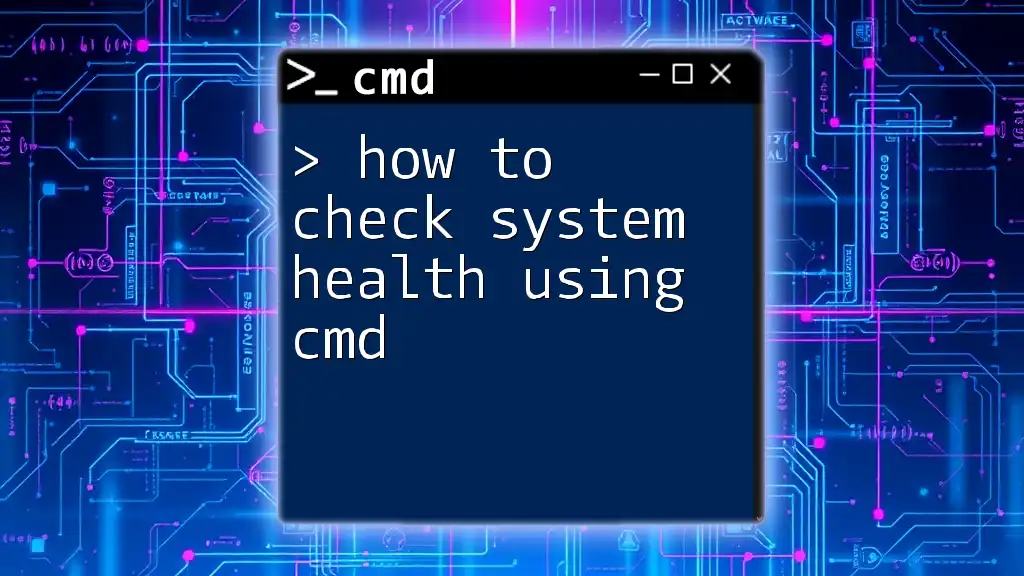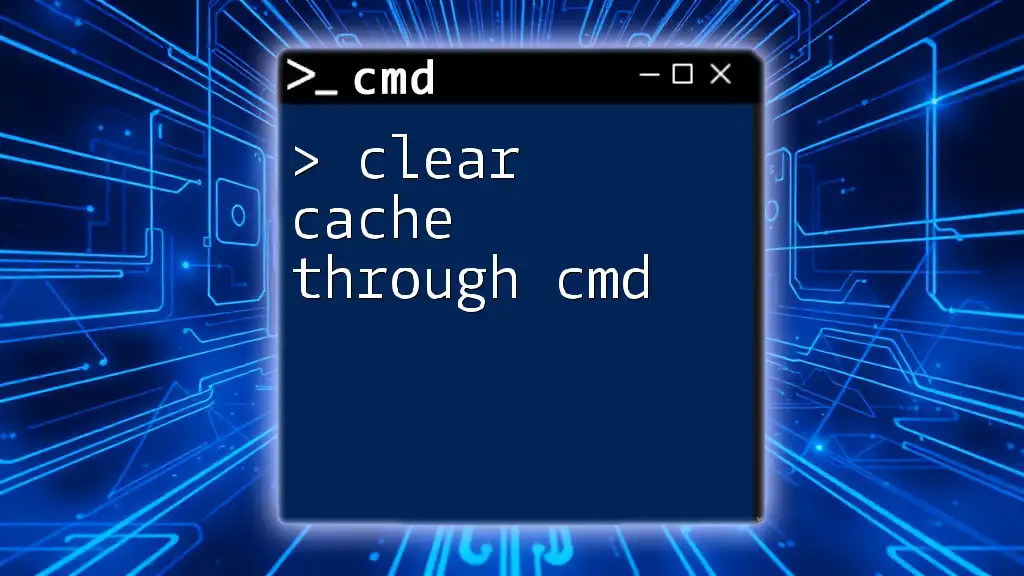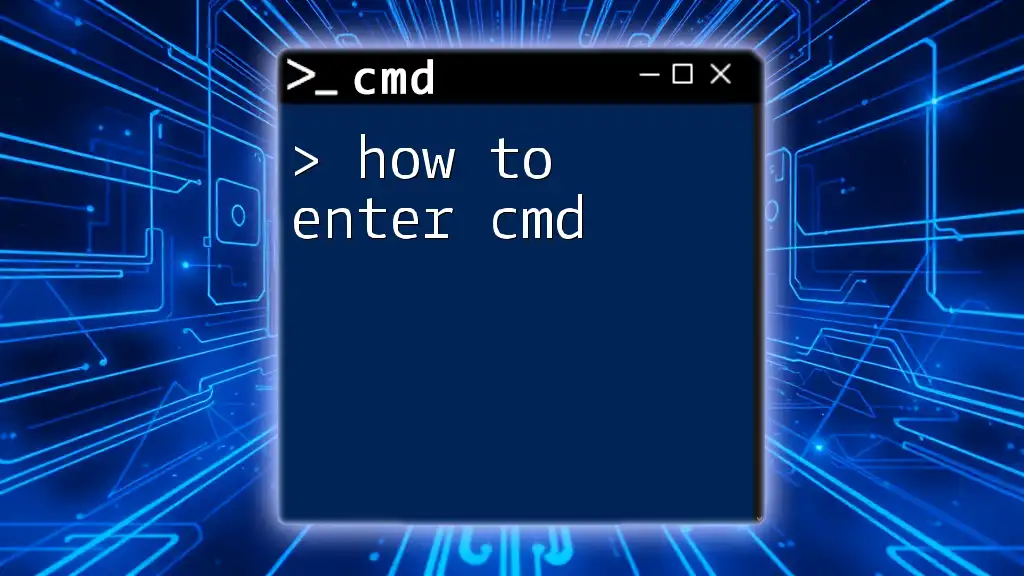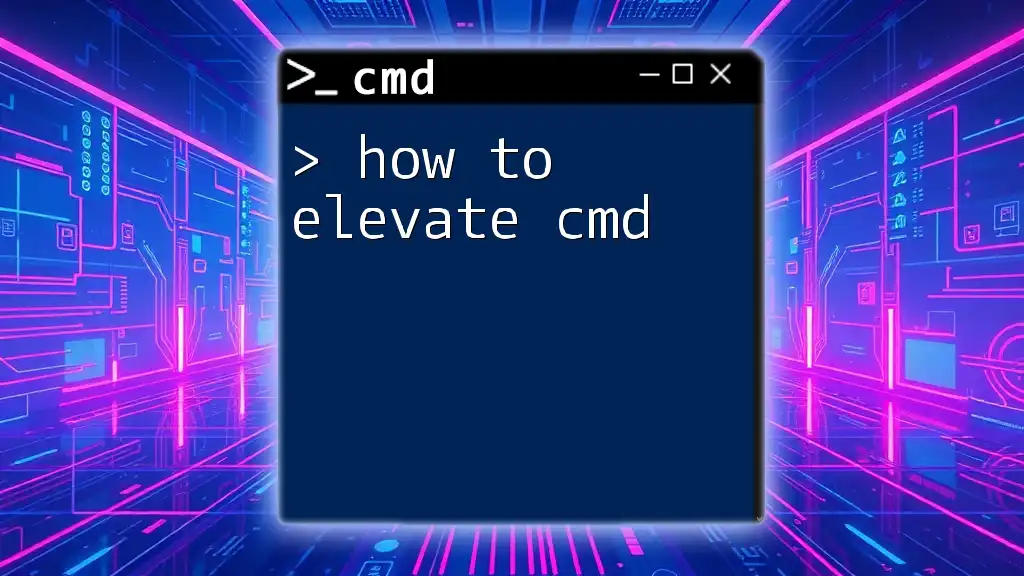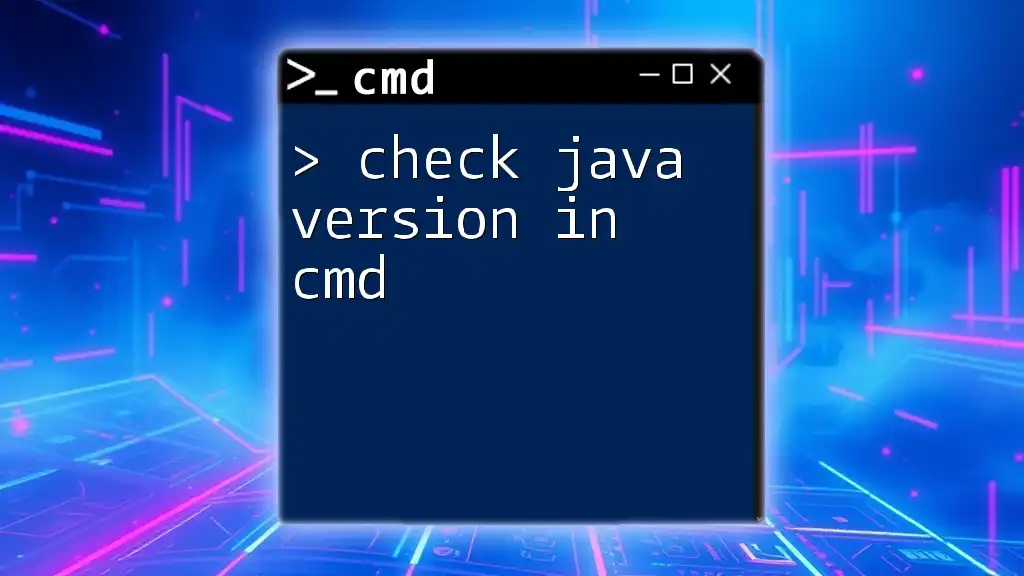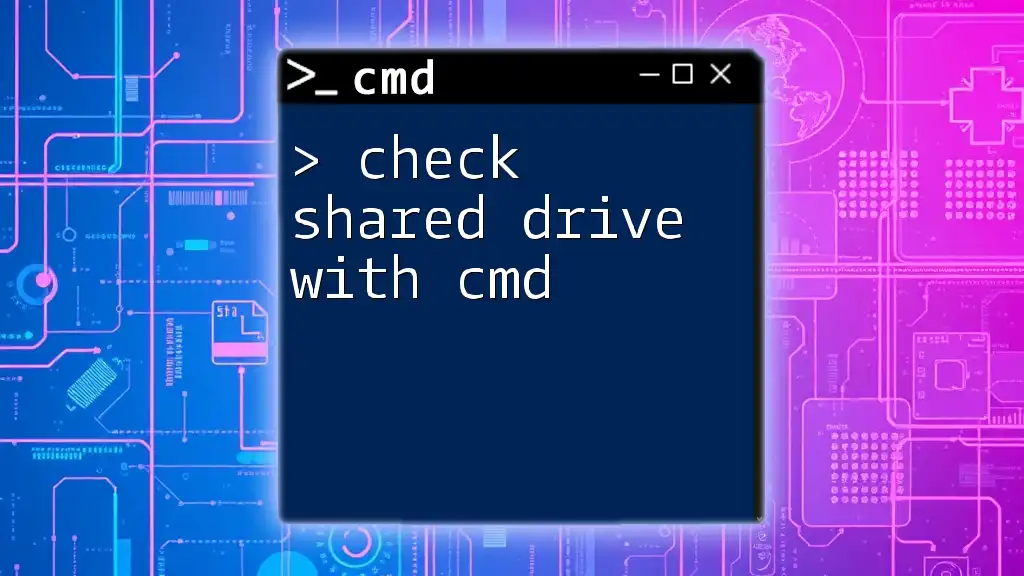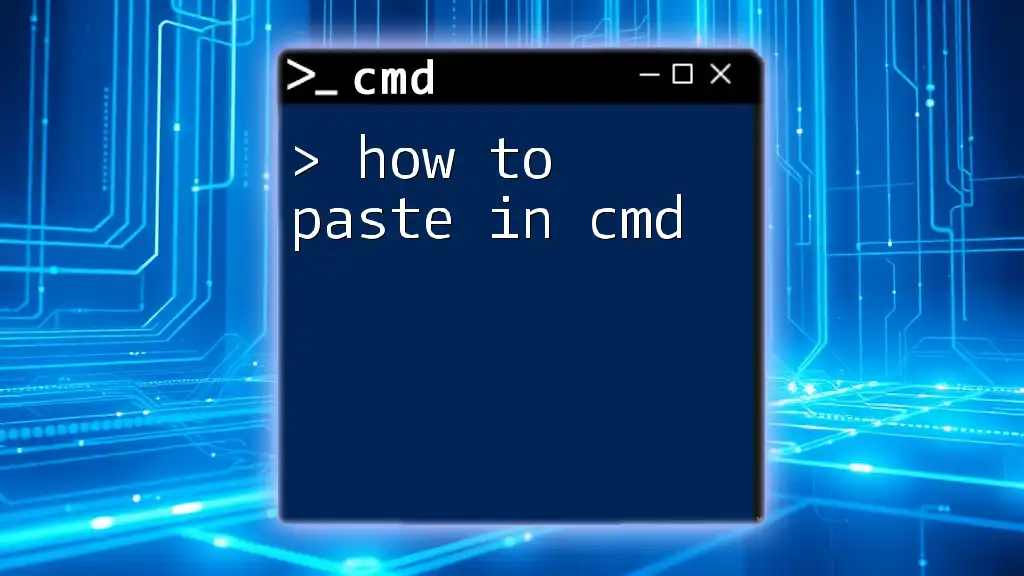You can quickly check the health of your laptop's battery using the Command Prompt by running a simple command that generates a detailed battery report.
powercfg /batteryreport
Understanding CMD Commands for System Health
What is CMD?
CMD, or Command Prompt, is a powerful command-line interpreter in Windows that allows users to execute various commands to manage their systems. Unlike graphical user interfaces (GUIs), CMD offers direct access to the underlying system features, which can often lead to quicker responses and more control over system processes. Familiarity with CMD can significantly enhance your ability to troubleshoot and maintain your laptop.
Why Use CMD for Health Checks?
Using CMD for checking laptop health has several advantages:
- Efficiency: CMD commands can often execute faster than navigating through multiple GUI menus, saving you time when you need to diagnose an issue swiftly.
- Detailed Information: Command Prompt provides detailed reports on your system's performance and health.
- Automation: Through scripting, you can automate routine health checks, making it easier to maintain laptop performance without manual intervention.

Essential CMD Commands for Laptop Health Check
Checking System Information
Command: `systeminfo`
The `systeminfo` command is invaluable when you want a comprehensive overview of your laptop's configuration and current state.
systeminfo
When executed, this command provides key information such as:
- Operating System version
- Memory information (RAM)
- Network adapter details
- Installation date
Understanding this data can help you assess your system's capabilities and identify potential upgrades.
Monitoring CPU and Memory Performance
Command: `wmic cpu get loadpercentage`
Monitoring your CPU's load percentage is crucial to ensuring optimal performance. A high CPU load can indicate processes that may be unnecessarily taxing your system.
wmic cpu get loadpercentage
This command will return a percentage that represents the current load on the CPU. Regularly checking this can help you identify if your system is struggling under the weight of too many processes or demanding applications.
Command: `wmic os get freephysicalmemory`
Memory availability is another critical factor in your laptop's health. Low free physical memory can lead to slow performance and system hangs.
wmic os get freephysicalmemory
The output shows the amount of physical memory that is currently free. If you find that this number is consistently low, it may be time to close some applications or consider upgrading your RAM.
Checking Disk Health
Command: `chkdsk`
Disk health is essential for your laptop's overall functioning. Using the `chkdsk` command helps ensure your hard drive is in good condition by checking the file system for errors.
chkdsk C:
This command checks the specified volume for logical and physical errors. If errors are found, `chkdsk` has the ability to fix them, which can prevent data loss and system crashes. Running this command periodically can help maintain disk health and longevity.
Monitoring Hard Drive Space
Command: `wmic logicaldisk get size,freespace,caption`
Keeping track of your hard drive's space is essential for performance. Insufficient storage can slow down operations significantly.
wmic logicaldisk get size,freespace,caption
This command lists each logical drive’s total size and free space. Interpreting these results can help you manage your files better, ensuring ample free space for system operations and updates.
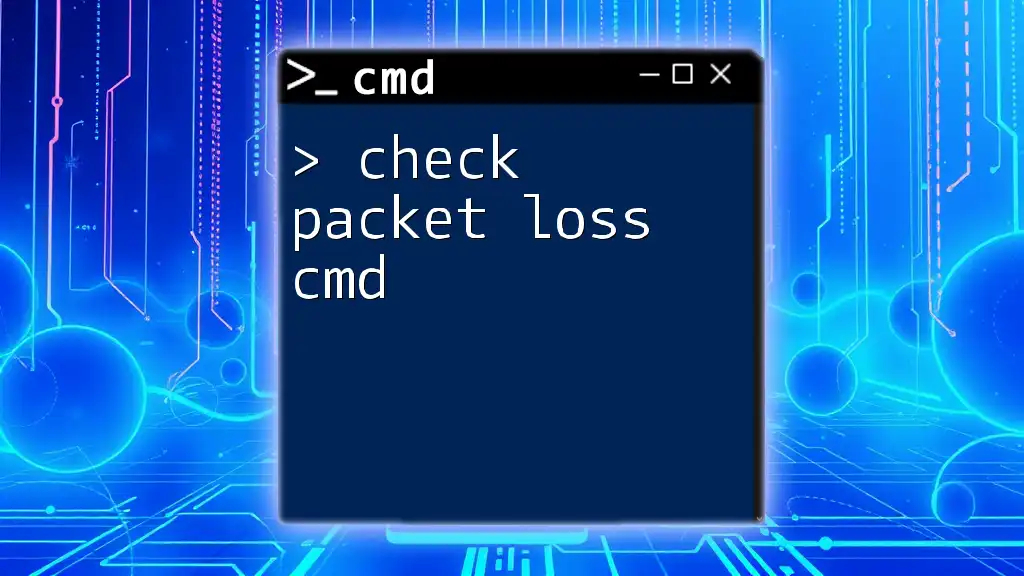
Advanced Health Check Commands
Verifying System File Integrity
Command: `sfc /scannow`
File integrity is vital for a stable operating system. The `sfc /scannow` command scans for corrupted or missing system files and attempts to restore their original versions.
sfc /scannow
When this command is executed, it checks all protected files and repairs any discrepancies. Running this command can resolve many system issues and improve overall stability.
Event Viewer Monitoring
Command: `eventvwr`
The Event Viewer is a powerful tool for monitoring system logs. By checking the logs, you can identify errors or warnings that may indicate problems with your laptop.
eventvwr
After running this command, the Event Viewer will open. Analyzing the events logged here can provide insight into recurring issues, enabling proactive management of your laptop's health.

Conclusion
Regularly using CMD commands to check laptop health thru cmd is essential for maintaining the performance and stability of your device. Understanding and applying these commands not only helps in troubleshooting but also empowers you to take control of your system management. Performing routine health checks can prevent tech issues before they become major problems and ensure your laptop runs smoothly for years to come.
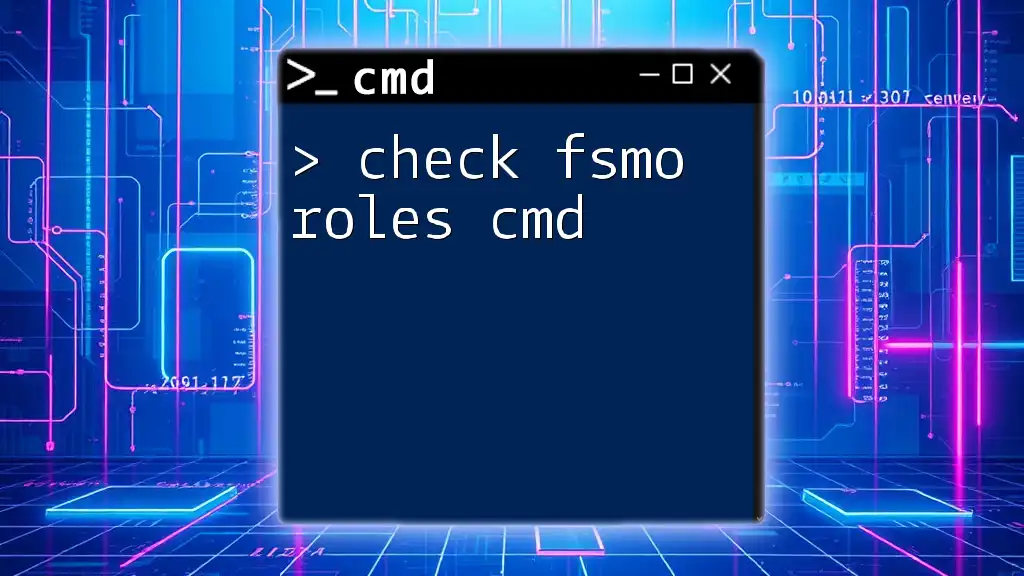
Additional Resources
To expand your knowledge of CMD, you can explore Microsoft's official CMD command documentation or consider joining a community of CMD enthusiasts. Engaging with others can provide new insights and tips on utilizing CMD to its fullest potential for system management.

